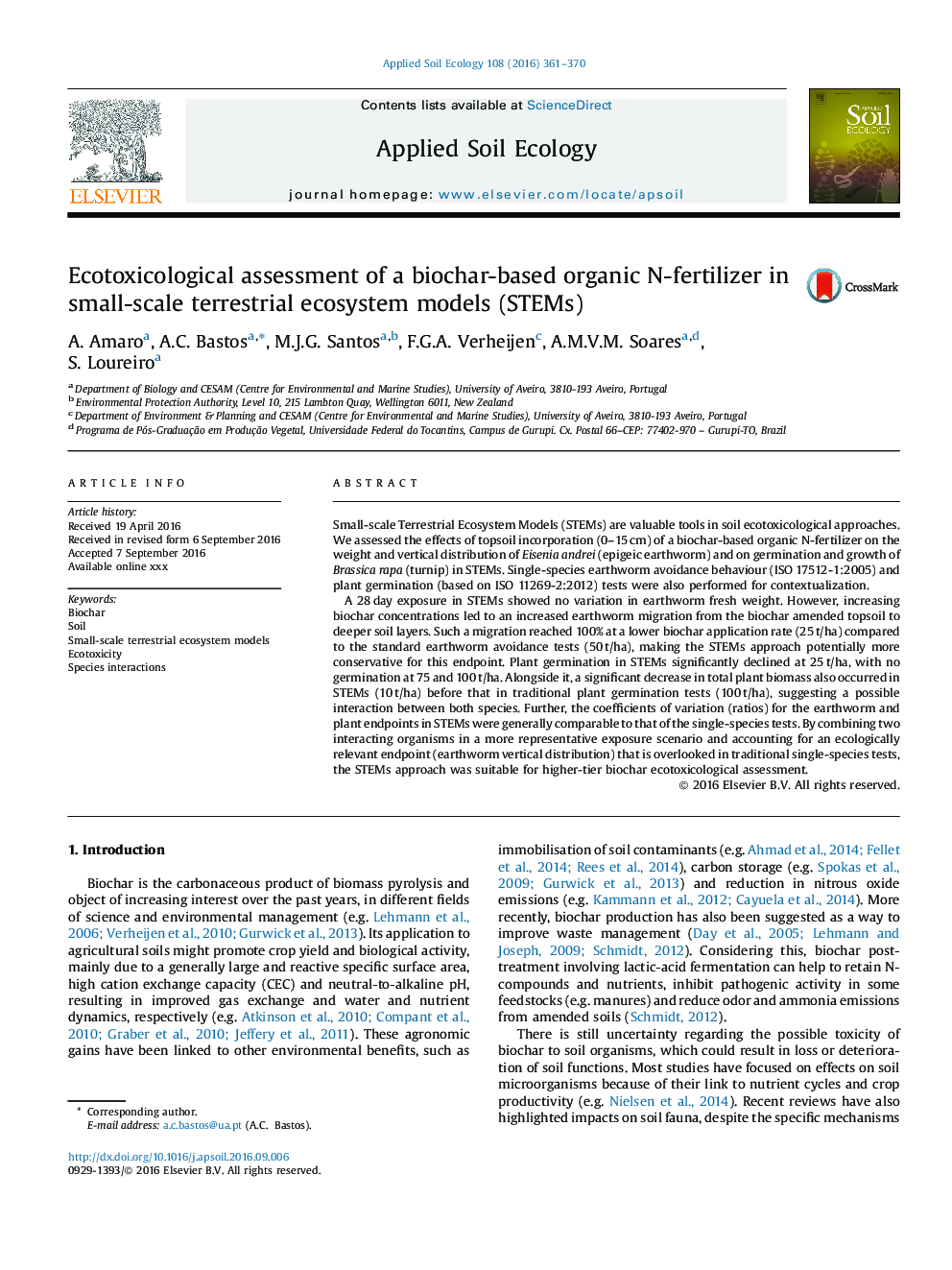| Article ID | Journal | Published Year | Pages | File Type |
|---|---|---|---|---|
| 6297504 | Applied Soil Ecology | 2016 | 10 Pages |
Abstract
A 28Â day exposure in STEMs showed no variation in earthworm fresh weight. However, increasing biochar concentrations led to an increased earthworm migration from the biochar amended topsoil to deeper soil layers. Such a migration reached 100% at a lower biochar application rate (25Â t/ha) compared to the standard earthworm avoidance tests (50Â t/ha), making the STEMs approach potentially more conservative for this endpoint. Plant germination in STEMs significantly declined at 25Â t/ha, with no germination at 75 and 100Â t/ha. Alongside it, a significant decrease in total plant biomass also occurred in STEMs (10Â t/ha) before that in traditional plant germination tests (100Â t/ha), suggesting a possible interaction between both species. Further, the coefficients of variation (ratios) for the earthworm and plant endpoints in STEMs were generally comparable to that of the single-species tests. By combining two interacting organisms in a more representative exposure scenario and accounting for an ecologically relevant endpoint (earthworm vertical distribution) that is overlooked in traditional single-species tests, the STEMs approach was suitable for higher-tier biochar ecotoxicological assessment.
Related Topics
Life Sciences
Agricultural and Biological Sciences
Ecology, Evolution, Behavior and Systematics
Authors
A. Amaro, A.C. Bastos, M.J.G. Santos, F.G.A. Verheijen, A.M.V.M. Soares, S. Loureiro,
